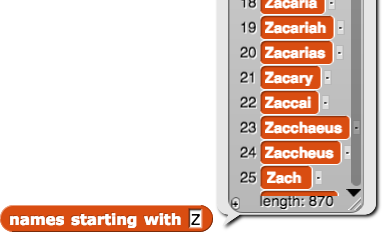-
Write the
earliest inblock. For names, this returns the first name alphabetically in a list:


- Write code that finds the index of the earliest item. This value is 8 for the list of names above. (You may not need this step, depending on your algorithm. See if you can do the next step without it.)
-
You may find some of your work in Unit 5 helpful.Write code that creates a new list with the earliest item deleted. There is more than one way to do this!
-
Build the recursive reporter
selection sort.

- How many times does
selection sortcall itself?
"U7L2-SelSort"
